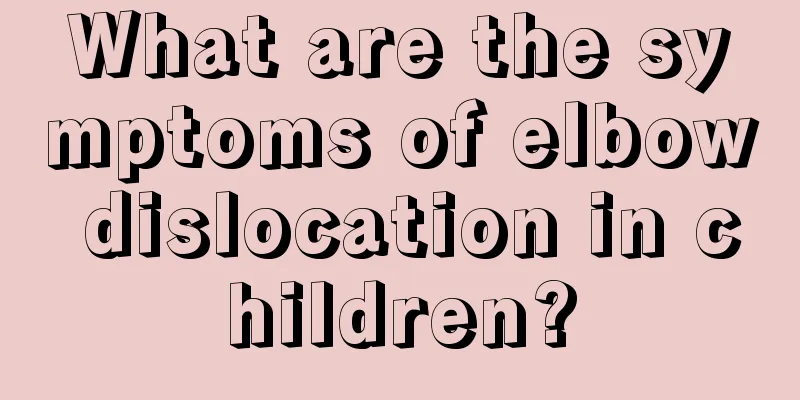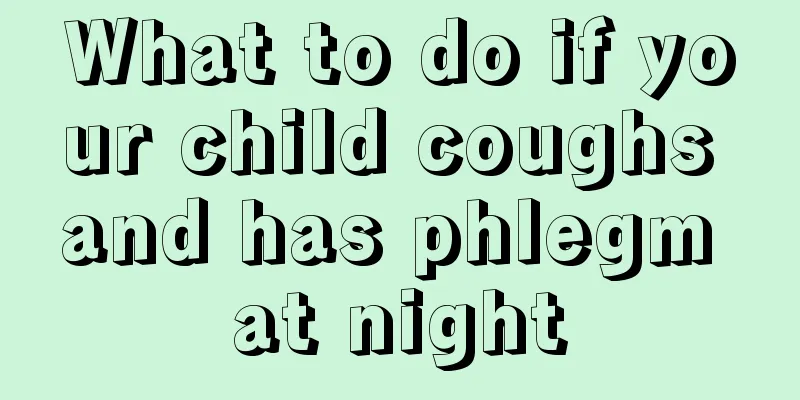What are the symptoms of elbow dislocation in children?

|
There are several relatively large joints in our human body. In addition to the knee joint and shoulder joint, the elbow joint is one of them. However, sometimes accidents may occur during exercise or work, causing serious damage to the body's joints, and even requiring surgery in the hospital, so you must pay attention to protection. So, what are the symptoms of elbow dislocation in children? Elbow dislocation is a common elbow injury, which mostly occurs in adolescents, but also occurs occasionally in adults and children. Due to the complexity of elbow dislocation types, it is often accompanied by serious injuries to other bone structures or soft tissues of the elbow, such as fractures of the medial epicondyle of the humerus, fractures of the olecranon of the ulna, and fractures of the coronoid process, as well as injuries to the joint capsule, ligaments, or vascular and nerve bundles. Most cases are posterior or posterolateral elbow dislocations. Causes Elbow dislocation is mainly caused by indirect violence. The elbow is the connecting structure between the forearm and the upper arm. The transmission of violence and leverage are the basic external force forms that cause elbow dislocation. 1. Posterior dislocation of the elbow This is the most common type of dislocation, mainly occurring in adolescents. When falling, the palm of the hand touches the ground, the elbow joint is fully extended, and the forearm is in supinated position. Due to the body's gravity and the reaction force of the ground, the elbow joint is hyperextended, and the top of the olecranon of the ulna violently impacts the olecranon fossa at the lower end of the humerus, forming a fulcrum of force. As the external force continues to increase, it causes the anterior brachialis muscle attached to the coracoid process and the anterior part of the elbow joint capsule to tear, resulting in posterior dislocation of the elbow joint with the olecranon of the ulna shifting posteriorly and the lower end of the humerus shifting forward. Because the medial and lateral condyles at the lower end of the humerus that constitute the elbow joint are wide and thick, and flat and thin front and back, and have collateral ligaments on the sides to reinforce their stability, if lateral and posterior dislocation occurs, avulsion fractures of the medial and lateral condyles are very likely to occur. 2. Anterior dislocation of the elbow Anterior dislocation is rare and is often accompanied by olecranon fracture. The cause of the injury is mostly direct violence, such as a direct blow to the back of the elbow or the elbow hitting the ground in a flexed position, resulting in a fracture of the olecranon and anterior dislocation of the proximal ulna. This type of injury causes more severe soft tissue damage to the elbow, especially vascular and nerve damage. 3. Lateral dislocation of the elbow It is more common among teenagers. When the elbow is subjected to transmitted violence, the elbow joint is in varus or valgus position, causing the collateral ligaments and joint capsule of the elbow to tear, and the lower end of the humerus may be displaced to the radial or ulnar side (i.e., the site of the joint capsule rupture). Due to the strong inward and outward rotation, the violent contraction of the forearm extensor or flexor muscles causes avulsion fractures of the medial and lateral condyles of the humerus, especially the medial epicondyle of the humerus is more prone to fractures. Sometimes fractured bones become lodged in the joint space. 4. Elbow Split Dislocation This type of dislocation is extremely rare. When the upward and downward transmission violence is concentrated on the elbow joint, the forearm is in an excessively pronated position, the annular ligament and the proximal interosseous membrane of the radius and ulna are split, causing the radial head to dislocate forward and the proximal ulna to dislocate backward, and the lower end of the humerus is embedded between the two bone ends. Clinical manifestations The elbow joint is swollen and painful, the joint is in a semi-flexed state, and the extension and flexion movements are limited. If the elbow is dislocated posteriorly, the area behind the elbow will be empty and the olecranon will protrude significantly backwards; if it is dislocated laterally, the elbow will show cubitus varus or valgus deformity. The cubital fossa is full and plump. The relationship of the inverted isosceles triangle formed by the medial and lateral condyles of the humerus and the olecranon changes. When the elbow is dislocated, attention should be paid to the symptoms and signs of vascular and nerve damage. |
<<: Can children with autism speak?
>>: There is a small bump on the baby's ear
Recommend
How to treat rhinitis in children?
Studies have found that if a cold is not effectiv...
Shocking! 12 kinds of daily food are the killers of baby health
The health of the family is the wish of every hou...
Nutritional diet for children in autumn
Whenever the weather on Earth gets slightly coole...
Why is the baby's palms hot but his forehead is not?
The baby's body temperature changes very quic...
Why does my baby itch when sleeping at night?
The baby's life is an issue that we need to f...
Why are children's lips red?
Generally speaking, normal people's lips are ...
What should I do if my baby catches a cold and has a runny nose? Parents need to understand these methods
Babies are very easy to catch cold, and the most ...
What should I do if my 2-year-old baby has tooth decay?
Children aged 2 years old are more greedy for sna...
The harm of alcohol cooling to children
The effect of alcohol on cooling down is not unfa...
Is herpetic pharyngitis hand, foot and mouth disease?
The issue that parents are most worried about now...
What to do if a child has a cough with mycoplasma infection
Children are more likely to suffer from some dise...
What causes sleepiness in teenagers?
With the importance and popularity of academic qu...
Treatment for 2-month-old baby who doesn't sleep at night
Children's physical condition is getting wors...
What to do if your child has a fever, cold, or cough
Cold and cough are common symptoms, especially fo...
Baby's eyes are a little squinting
If you find that your baby has one eye strabismus...









